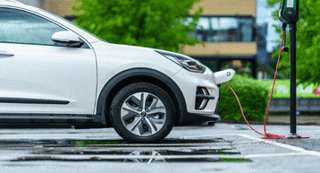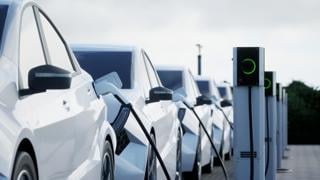Plug-in hybrid electric vehicles (PHEVs) are unlikely to prove to be a cost-effective choice for fleets and would need to cover 166,000 miles to re-coup the extra costs, according to Activa Contracts.
Its financial analysis suggests it could take more than eight years for the breakeven point from an employer’s perspective to be reached on a PHEV clocking up 20,000 miles per year, when compared with an equivalent diesel-engined model.
Many fleets have discovered that anticipated fuel savings have failed to materialise as drivers have not capitalised on a car’s zero emission electric mileage range.
As a result, while drivers can expect to make tax and fuel savings if PHEVs are driven and used in their most efficient manner by maximising electric power, Activa Contracts’ whole life cost analysis over three-years/60,000 miles highlights that it could take many more years and many additional miles for companies to recoup the additional cost of the plug-in over an equivalent diesel model.
Activa Contracts’ sales director Lisa Temperton said: “If a driver uses motorways and dual carriageways a lot and averages 50 miles or more a day, then a hybrid car is not efficient and it’s possible that neither driver nor employer will see a benefit.”
However, she added: “Around a city for short journeys a PHEV is a very efficient vehicle. Therefore, a driver’s journey profile is crucial to calculating the cost effectiveness of the dual fuel management system.”
When considering adding plug-in hybrid models to a fleet choice list, companies must take into account a wide range of economic factors - whether leasing or buying - according to Activa Contracts. They include: Mileage, length of contract, fuel policy, benefit-in-kind tax savings, type of journey, length of journey, consistency of use of electric mode, initial outlay and breakeven point.
Notwithstanding the higher list price and therefore P11D value of a PHEV versus a diesel equivalent, Activa Contracts’ acknowledges the advantages of a plug-in hybrid as being benefit-in-kind tax savings for the driver and an eco-friendly perception.
However, it lists the disadvantages as: high initial cost, unsuitability for certain journey profiles and driving styles, plus the time and inconvenience involved in battery charging.
The Mitsubishi Outlander is the UK’s best-selling PHEV and Active Contracts’ analysis shows that the 2.0 GXhs auto (P11D value £43,054) would potentially save a driver £2,154 a year in benefit-in-kind and fuel (assuming maximum efficiency usage and paying for fuel) versus an equivalent diesel Outlander 2.2 DI-D GX2 manual six-speed (P11D value £24,984). However, due to the additional more than £18,000 price the breakeven point from an employer’s perspective would not be reached until 166,000 miles had been clocked up. Assuming 20,000 miles a year that would take more than eight years.
The Audi A3 Sportback 1.4 TFSI e-tron 150PS S Tronic semi-automatic six-speed (P11D value £35,635) would potentially save a driver £2,340 a year in benefit-in-kind and fuel (assuming maximum efficiency usage and paying for fuel) versus an equivalent diesel A3 Sportback 1.6 TDI Black Edition 110PS six-speed manual (P11D value £25,900). But, due to the additional more than £9,700 price the breakeven point from an employer’s perspective would not be reached until 83,200 miles had been clocked up. Assuming 20,000 miles a year that would take more than four years.
Turning to the Mercedes-Benz C-Class 350e Sport Premium Plus automatic (P11D value £41,010) and it would potentially save a driver £2,227 a year in benefit-in-kind and fuel (assuming maximum efficiency usage and paying for fuel) versus an equivalent diesel C-Class 200d AMG Line six-speed manual (P11D value £32,837). But, due to the additional more than £8,100 price the breakeven point from an employer’s perspective would not be reached until 73,400 miles had been clocked up. Assuming 20,000 miles a year that would take almost four years.
In compiling the data using its own whole life cost figures, Activa Contracts says there are many variables and intangible factors, such as driver behaviour, that must be taken into account. Nevertheless, says the company, the projections indicate factors that fleet managers must consider when considering if PHEVs have a place on vehicle choice lists.





















Login to comment
Comments
No comments have been made yet.